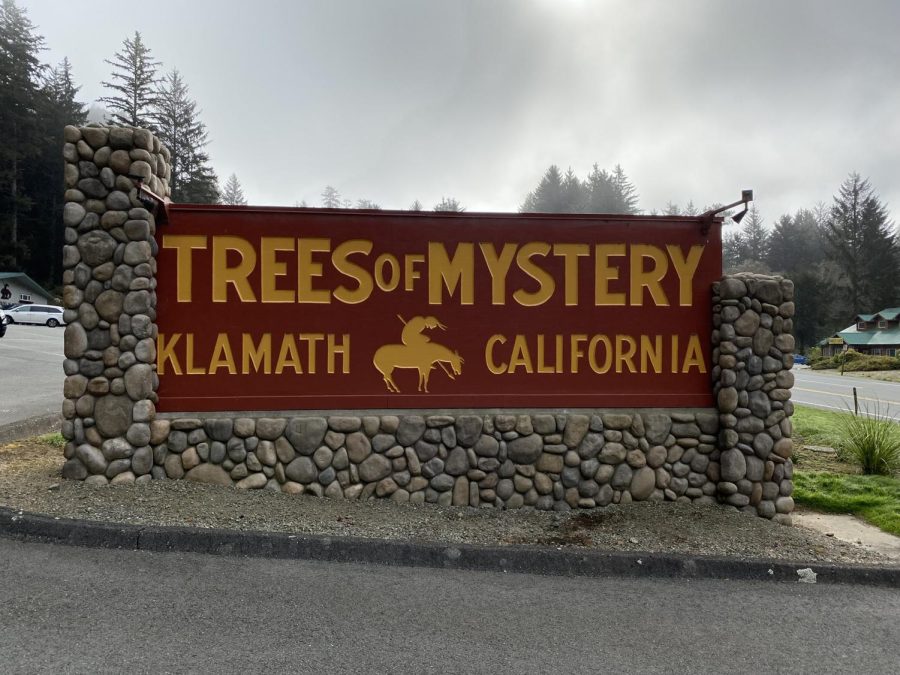Have a three day weekend coming up? Or a long break from school? Or maybe you want to fudge the truth a little and tell your teachers you’re going to meet Paul Bun
yan. Well, that’s not so much of a lie. Any way you spin it, taking a mini road trip down to California’s northern border is a good opportunity to get out of the house and see some of the oldest living giants in the Pacific Northwest.
The Sequoia sempervirens, commonly known as coastal redwoods, are famously known to grow in California, living over a millennium and then some. They grow exclusively on the central and northern Pacific coast. The Trees of Mystery is one of the first tourist attractions you run into, so if you don’t want to be stuck in a car any longer than you have to, it’s a good destination.
The fastest way to get there is taking I-5 or US-199, which is a little over five hours without stopping. OR-58 takes over six hours, but going through Grants Pass is probably the most scenic route one could drive. The Trees of Mystery is in Klamath, CA, which is 36 miles from Oregon’s southernmost border. The closest city heading south is Crescent City, which is about three miles north of the Trees of Mystery, and has decently priced hotels to stay in. Overall, the park was quite attractive, with engaging scenes and little ‘Did You Know’ signs throughout the trails to tell history of the redwoods and the environment around it. There’s a handful of other fun things as well:
Number 1: Pet-friendly
With a long trip, most people tend to bring their dogs to avoid leaving them at home. If you’re bringing pets, research pet-friendly hotels nearby to avoid spending hours looking in whatever town you stay the night. The park has designated pet areas with pick up bags, and you can walk on all the publicly accessible trails save for the bridges in the trees and the gondola.
Number 2: The awe-aspect
Even if you’re not a nature-lover, it’s hard not to be dumbstruck with the sheer size and grandness of the ancient Redwoods. There are little carved signs in front of the more notable ones: the Trinity Tree that’s made of three Redwoods grown together, 297 feet high; the Cathedral Tree, a cluster of trees that stretches over 20 feet across and where several weddings a year are hosted; and the Brotherhood Tree that is also over 297 feet tall, 19 feet in diameter, with a Redwood sign that has carved ‘Dedicated to the Brotherhood of man. All races, creeds, and colors’ at the base of the tree. The latter is quite humbling. It’s to the left of the Interpretive Center and just before the Skytrail in the park.
Number 3: Marylee Thompson-Smith Commemorative Garden
As soon as you round the corner after paying the entry fee, there is a small garden to the right of the trail, surrounded by a small wooden fence that surrounds a quaint garden and pump-powered pond. Marylee Thompson-Smith and her husband Ray had bought Wonderland Park in 1946, christening it Trees of Mystery in its official opening on March 10, 1968. A Native American history enthusiast, Thompson-Smith had hoped to preserve artifacts and pieces of art for future generations. Her dedicated garden also has aesthetically pleasing mushroom benches and a giant artificial squirrel to pet.
Number 4: Trail of Tales
One of the most captivating parts of the whole trail was the aptly named Trail of Tales, the last stretch of the paths dedicated to telling the story and life of Paul Bunyan through about 50 chainsaw-carved sculptures. Such statues include Paul’s cradle and axe, the largest pocket knife you’ve ever seen, Paul’s Book Larnin, Little People of the forest, and shaving with a giant saw. It also showcases Paul’s lumbermates: Max the Axe, Ol’ Red Thumb Robbie, Jack the Back, Babe, Sawdust McPherson, Sourdough Sam, Pete Petey, and Cookey-World’s Fastest Waiter.
Originally written by George Grow, Paul Bunyan is the John Henry of the lumberjack world, clearing scores of forest with a single swipe, causing earthquakes when he turns in his sleep, and eating over 10 hotcakes every Sunday. The tale goes that Paul found Babe buried in the snow, his fur staying blue after thawing out. He and Paul worked in tandem, deciding to leave their home in Main and journey west for more work, until they ended up in California and the Redwoods. Although they can’t work in the forests anymore, because Redwoods are the sole living species of Sequoia in the cypress family, and it’s illegal to cut them down.
Number 5: End of the Trails museum
As previously mentioned, Thompson-Smith loved collecting Native American artifacts, respecting the time and effort it took to create every single one. So, The End of the Trails museum displays clothing, paintings, carvings, and pottery (for sale) from various tribes in the nearby areas. The Sioux were most notable in the park, but the museum pays homage to over a dozen in the state. The rooms were very expansive, it would’ve taken another two hours in the park to genuinely take in every item and see the history behind them.

